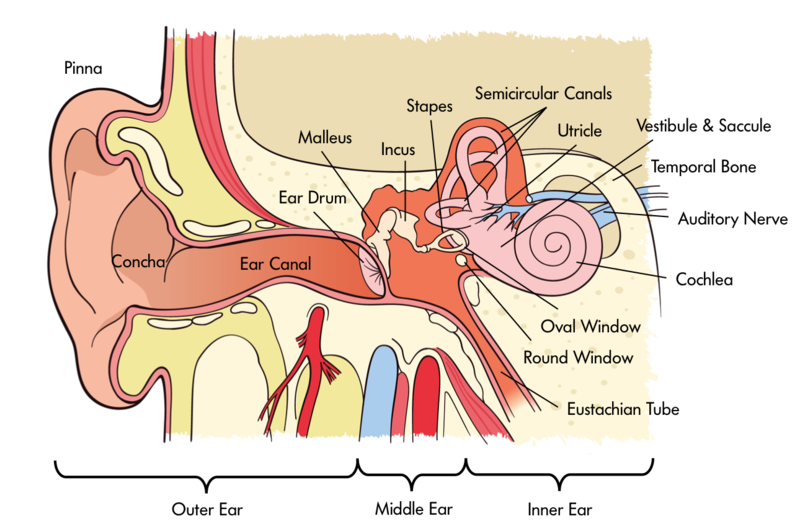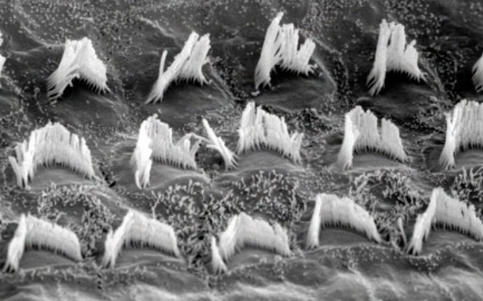Hearing (Auditory System)
Learned in Psychology: https://nobaproject.com/textbooks/paul-wehr-new-textbook/modules/hearing
Other useful videos:
- Khan Academy https://www.youtube.com/watch?v=6GB_kcdVMQo&ab_channel=khanacademymedicine
- https://www.youtube.com/watch?v=SU_aecxckRg&pp=ygUNaGVhcmluZyBzeXN0ZQ%3D%3D
Perceptual attributes of sound:
- Loudness
- Pitch
- Timbre (quality of the sound)
- Timbre refers to the quality of sound, and is often described using words such as bright, dull, harsh, and hollow. Technically, timbre includes anything that allows us to distinguish two sounds that have the same loudness, pitch, and duration. For instance, a violin and a piano playing the same note sound very different, based on their sound quality or timbre.
Overview of Auditory System
 Eardrum = tymphanic membrane. SUPER USEFUL (and it sounds cool)
Eardrum = tymphanic membrane. SUPER USEFUL (and it sounds cool)
Ear can be divided in 3 parts:
- Outer Ear
- Middle Ear
- Inner Eat
The outer ear consists of
- the pinna
- the ear canal (or auditory meatus)
- and the tympanic membrane.
The middle ear consists of
- an air-filled cavity, which contains the middle-ear bones, known as the incus, malleus, and stapes, or anvil, hammer, and stirrup, because of their respective shapes
The inner ear includes
- the cochlea
Fascinating
One of the most fascinating things is that we can hear someone talk and clap at the same time, even those waves interfere with each other. The reason we can do this is thanks to frequency analysis, which is done in the cochlea.
“the many frequencies that make up a complex sound are broken down into their constituent frequencies, with low frequencies creating maximal basilar-membrane vibrations near the apex of the cochlea and high frequencies creating maximal basilar-membrane vibrations nearer the base of the cochlea. This decomposition of sound into its constituent frequencies, and the frequency-to-place mapping, or “tonotopic” representation, is a major organizational principle of the auditory system, and is maintained in the neural representation of sounds all the way from the cochlea to the primary auditory cortex.”
Hair Cells
 From the Khan Academy videos, we have that inside the organ of corti, there are these hair cells. The outer hair cells seem to function to mechanically amplify the sound-induced vibrations, whereas the inner hair cells form synapses with the auditory nerve and transduce those vibrations into action potentials, or neural spikes, which are transmitted along the auditory nerve to higher centers of the auditory pathways.
From the Khan Academy videos, we have that inside the organ of corti, there are these hair cells. The outer hair cells seem to function to mechanically amplify the sound-induced vibrations, whereas the inner hair cells form synapses with the auditory nerve and transduce those vibrations into action potentials, or neural spikes, which are transmitted along the auditory nerve to higher centers of the auditory pathways.